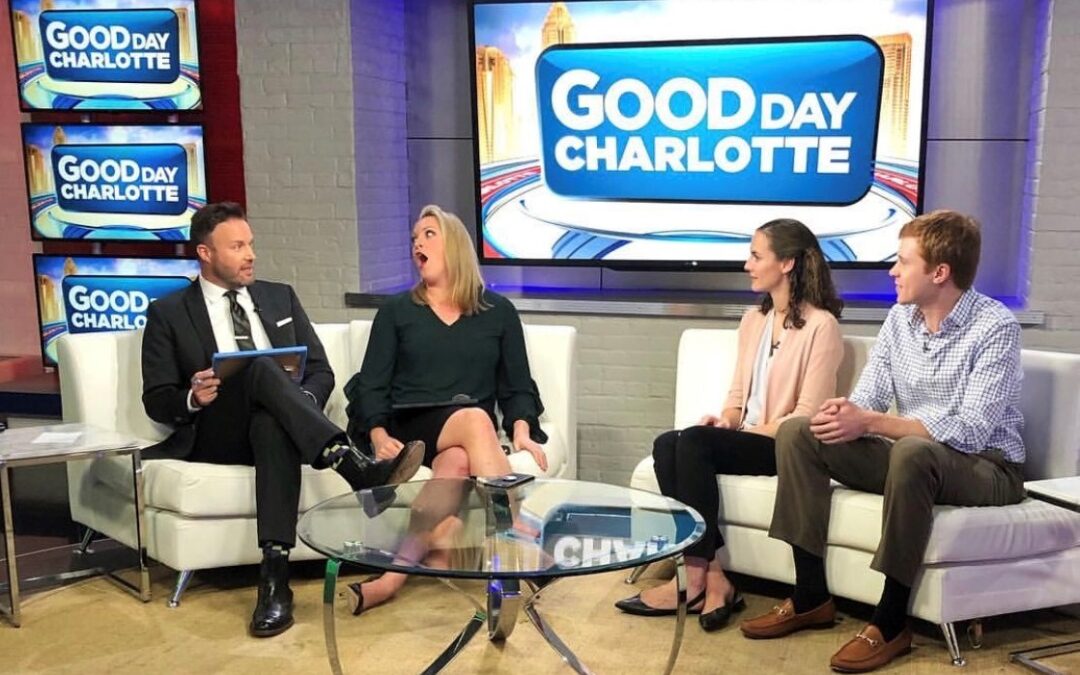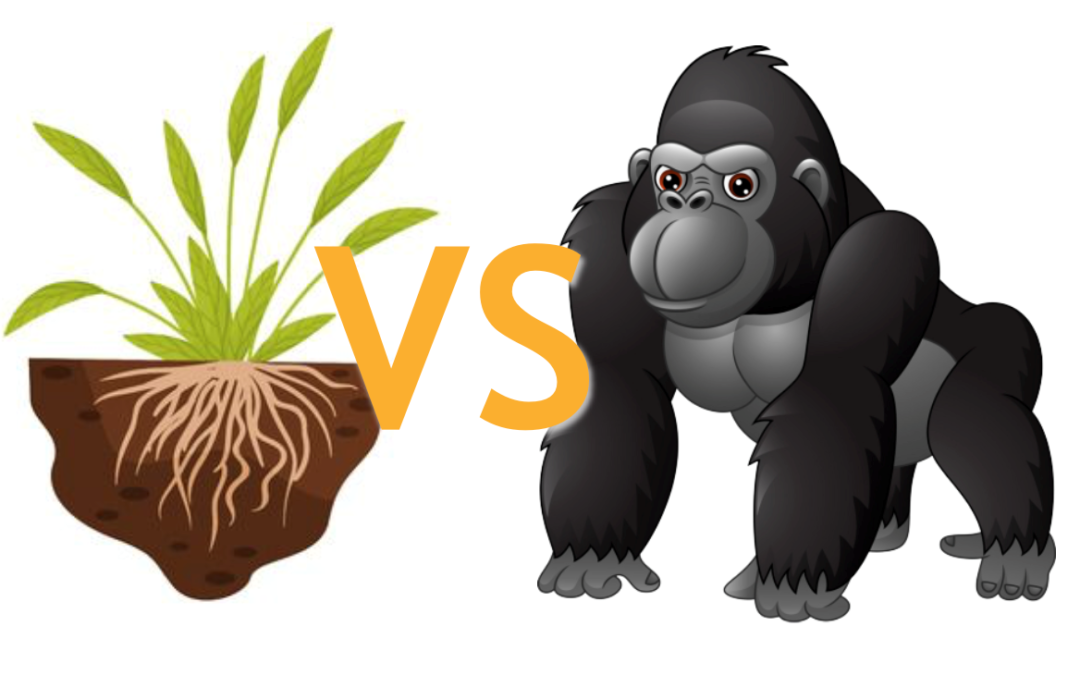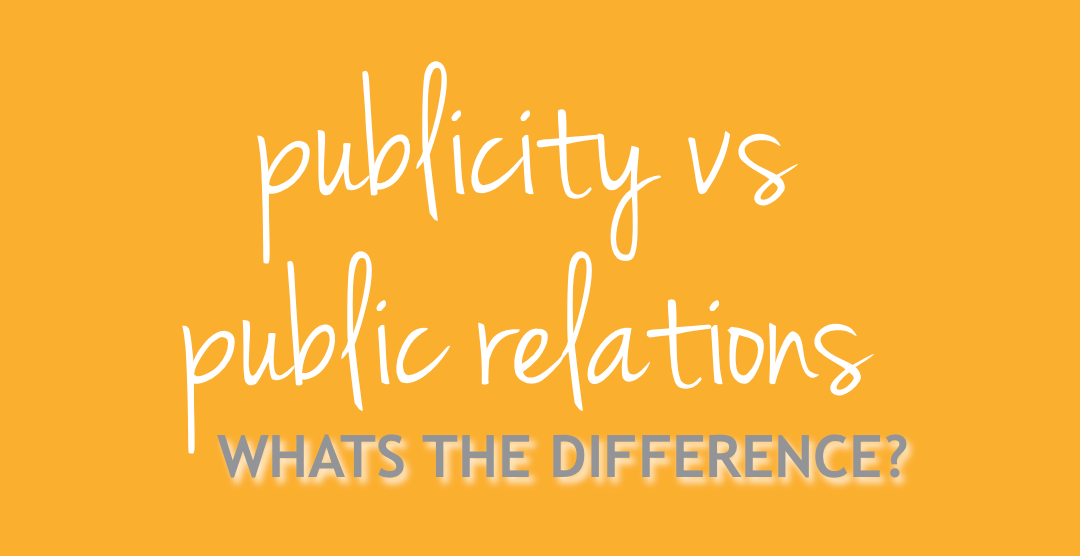
Blog
As brands compete to stand out in today’s noisy internet age, many companies are looking for that silver-bullet strategy to make products and services stick with customers. Often, this can feel like a futile exercise, especially as customers’ social media feeds continue to expand with next-best-things at every click.
Event activations, however, can change that game! Events are a great way to not only build brand awareness, but also nurture real business-to-consumer relationships by directly engaging with target audiences. The goal is to give consumers a good taste of the brand’s personality and reputation, leaving a lasting impression on consumers that only an event experience can provide. Activations can take many different approaches depending on your brand and consumer audience – but here are four tips for making yours a success:
- Capitalize on ways to get #trending. Leveraging specific trends during event activations allows the brand to reach larger audiences by taking the event online. In 2016, Sonic used Coachella, a popular music and arts festival, to promote their square milkshakes all over social media. Coachella attendees were given a milkshake for free if they posted “#squareshakes” on their Instagram. Boom… instant impact.
- Partner with influencers/other brands. Partnering with influencers or other companies can boost the credibility of products and services showcased at an event. This is usually a win-win situation for all parties involved (a little extra attention for you both!) and nets an overall bigger audience.
- Make your event interactive. Any event that offers its audience a chance to be interactive, especially in a unique and creative way, has an instant advantage. Taking the event from something the audience observes to something they’re a part of can leave that desirable long-lasting impression on the customer. So, get creative! Consider how attendees can step inside the event experience – and leave with a behind-the-scenes look at the brand that resonates.
- Give your audience what they want. Consider the location of your event, and what its usual traffic looks like. Why are bystanders or attendees there in the first place, and how can your brand enhance that experience? In 2017, Nordstrom set up special shops that sold experiences to their consumers. These shops provided services such as makeovers, styling, and samples. Nordstrom knew exactly who their audience was: Women who appreciate fashion and beauty. With this information in mind, they were able to provide their consumers with exactly what they were looking for – and leave them with a lasting impression of their brand.
More than anything, your event must be authentic to your company! Through active listening and creative storytelling in the strategy phase, you can create an overall delightful event experience that will humanize your brand and forge a positive connection with consumers in years to come. At PIVOT PR, we’re pros at all of the above. Give us a shout to chat about how we can help with your event strategy today.

Blog
You’ve got a story to tell, and an audience to reach. So what’s the most efficient way to connect the two? Between print, social media, and broadcast channels, myriad platforms are available to help share your message with audiences. Landing a television spot, specifically, can be a storytelling silver bullet for individuals, organizations, and businesses. If you’ve got your eyes on a television interview (now or perhaps in the future), we’ve developed four guidelines to help you “nail the spot”:
- Perfect the pitch – As with all media relations, that first touch point with a media outlet can make or break your chance at securing an interview. TV producers, in particular, are inundated with requests all day – and unlike print journalists with certain beats, they’re generally open to any story that might resonate with their viewers. For this reason, a little homework can go a long way to help your pitch stand out from the pack. Tailoring a subject line with a reference to a recently-aired story, using the opening line to highlight a personal tidbit or connection related to the producer or show, or teasing a half-baked segment are just a few creative ways to do this.
- Bring only the essentials – So, your pitch piqued the interest of a TV producer! It’s time to start planning your segment. Because television is fast-paced and most interviews are allotted less than five minutes, it’s vitally important to orient every talking point around your story’s call-to-action. In other words, every anecdote, prepared answer, or supportive detail about your story should always pivot to the next step. Write your talking points down, and practice aloud how you’ll weave the call-to-action throughout the conversation. Props and additional guests can also be valuable supportive elements for your story. Let them work for you by supplying
- Keep story first, teller second – While most programs are formatted to make interviews feel like an informal conversation, TV exposure is far too valuable to let a conversation truly meander. This can be a challenge for big personalities or those who feel uncomfortable with “selling” or “pushing” something to audiences. As unnatural as it might feel, always fight the temptation to venture into subject matter (at least, for too long!) that’s not related to exactly what you’re on-air to communicate. Your bio might be what gets the audience to show up, but the story you tell is what they will – or won’t – remember. Stay focused.
- Lock in the logistics – Before, during, and after your television interview, don’t let details get lost… and then in your way. Keeping track of contact information for everyone on your TV pitch-list, including response status, booking dates, and studio arrival times and locations, will prevent scheduling snafus like double-booking or worse, late or missed interviews. As with most other things on your agenda, it’s a good idea to create calendar appointments with all day-of information once you’ve confirmed your spot. Putting a bow on the details ahead of time frees up more mental space for you to plan, practice, and nail that interview.
These are just a few of the many ways PIVOT helps our partners be great on-air storytellers. Keep up with our media relations and other PR tips on our blog. And, call us when you’re ready to make that pitch!

Blog
In public relations, certain terms are hard to distinguish from each other due to a strong similarity. For example, public relations, or “PR”, is often conflated with related terms like marketing and advertising. But such practice areas can work compatibly with one another, while still serving a unique role. The same goes for grassroots marketing and guerilla marketing – two terms that are often confused for the same thing. Understanding the difference between the two is helpful, especially for those interested in implementing either of these tactics within a business. Today, we’re drawing the distinction for you – so you can be confident in the next step.
Let’s start by defining grassroots marketing. Grassroots marketing targets a small audience in hopes that the specified chosen group of people spread the intended message to larger audiences. One of the best ways to encourage others to share a brand’s message is through emotional triggers. In 2013, Canadian airline Westjet targeted a group of passengers all traveling on the same flight, using social media to individually ask them what they wanted for Christmas. While the passengers were airborne, Westjet rushed to buy the gifts that the passengers asked for. Once the plane landed, Westjet placed the gifts on the baggage claim carousel for the passengers to retrieve. The campaign encouraged people to share their stories through social media, the place where the company originated its interaction with the passenger-customers.
Conversely, guerilla marketing is best known for unconventional and unique tactics that raise brand awareness by targeting a larger audience. Guerilla marketing stands out because of the way that it doesn’t interrupt its audience. It catches its audience somewhat by surprise, appearing in normal day-to-day life. In 2009, Bounty showcased the absorbency of their paper towels by placing two large spills from a coffee cup and a popsicle in New York and Los Angeles. The brand executed this by advertising itself in a unique and eye-catching way while also providing a solution to the “mess.” Note that this campaign did not target a specific audience but instead was designed to reach as many people as possible through social sharing.
Now that the two types of marketing have been defined, let’s highlight the key difference between the two. Grassroots marketing starts by targeting a very specific and intentional demographic or audience. Guerilla marketing is designed to target and reach a larger audience. Distinguishing these two terms all comes down to the size and intent of audience. However, both types of marketing can employ the same strategies and techniques. And since grassroots and guerilla marketing both aim to increase sales and raise brand awareness, both have the potential to generate effective marketing results within any business.

Blog
Eric and Allison recently had an opportunity to sit down with Hannah Smoot, one of the newest reporters on staff at the Charlotte Observer. Hannah shared all about her background in journalism, thoughts on the future of the newspaper industry, and some fun stories she’s covered in the past. Check it out!
Tell us about yourself… where are you from, and what brought you to Charlotte?
I grew up in Raleigh and went to college at UNC – Chapel Hill. When I graduated in 2017, I went straight to Rock Hill for a job with the Rock Hill Herald. I worked down there for a couple of years for the same company that owns the Charlotte Observer, so I had been working closely with some of the editors and reporters in Charlotte. I really loved living in Charlotte and being part of the community, so I wanted to get up here as soon as possible. When this job opened up, I just had to apply for it and had to get into Charlotte… so its been really great being able to live and work in the same place!
What beats did you focus in Rock Hill, and what will you be covering here?
In Rock Hill, I was focused mostly on politics and business. Now here in Charlotte, I’m on the business desk focusing on healthcare and aviation, and a little bit of retail as well. Its definitely a lot different than what I was doing… but the reason I was so comfortable making the shift is because I always liked taking hard to understand topics and translating it to how it affects people in their everyday lives. I think there’s a lot of opportunities to do that in all of these beats, especially in Charlotte.
So now that you’re here in Charlotte… what does your day to day look like?
I’m still figuring that out! It’s still new, so it’s a lot of reaching out to different PR people or spokespeople and meeting them. Right now, I’m really focused on building relationships in the community. I’m planning on being in Charlotte for quite a while, so I wanted to take the time to build up those relationships and get to know people.
Knowing that the media landscape has changed dramatically in recent years, what do you think the future of the traditional newspaper industry looks like?
Of course, I think digital is going to be so important… we’ve already seen that in other industries. I’ve seen this in covering retail, since this is something that retailers are focused on. People are going online to shop… people are going online to read our news… people are going online to do everything. So I think it’s going to be very important for us to figure out how we can get our news to people while also building a community online. For years, people would sit down at the kitchen table and read the newspaper on a Sunday morning, and we have to learn how to create that same effect online.
What’s one of the most memorable stories you’ve worked on during your career as a journalist?
There’s been a couple of interesting ones… One of my favorite that I really enjoyed was actually one of my first stories in Rock Hill. I got to report on the BMX World Championships that was held in Rock Hill a couple years ago. So as a part of that, I got to go and ride a BMX bike down the track… which is TERRIFYING, but also a lot of fun! I did wipe out (my editor told me before I left that I wasn’t allowed to break anything ?) I did sprain my ankle, but otherwise it was a lot fun. Personally, I really enjoy those stories when I can go out, get hands-on, and try something new.

Blog
The term “PR” (public relations) is often conflated with communications-related references like press, buzz, and publicity. However, while public relations practitioners frequently consider such ends in a PR strategy, simply garnering publicity for a client is rarely, if ever, the end goal. If you’re surprised to hear that, let us help you make the distinction. Here are four clear ways PR is different from publicity:
- Publicity considers the now; PR sees tomorrow – PR professionals develop communications strategies that are anchored on an ultimate business goal. This requires a holistic approach to planning and execution that occasionally involves publicity-generating as a tactic, if it is appropriate within the context of the organization or individual’s current story. To put it simply: sometimes a business, organization, or individual needs publicity for something one-dimensional. Alternatively, a PR strategist crafts measured steps toward a goal-oriented future that learns from the past and is thoughtful in the present.
- Publicity focuses on quantity; PR is all about quality – ‘Good publicity’ and ‘Good PR’ aren’t always interchangeable. A publicist can achieve success by securing maxed-out event attendance or high volumes of press inquiries. A PR professional, on the other hand, has succeeded in a tactic when an organization or individual achieves the intended communications objective, be it proactive or reactive. PR teams must navigate nuance and sensitive messaging with ease, and be agile when executing on a campaign. For PR campaigns, results aren’t always quantifiable.
- Publicity is one-dimensional; PR adopts many forms – A publicist’s work generally revolves around amplifying a positive turnout, announcement, or story. Conversely, PR is about setting the tone and controlling a narrative, no matter the context. Often, a PR campaign isn’t something overt or clearly visible; many can work behind the scenes, subtly influencing customers or tactfully working to shift perceptions on a hot topic. As a result, success varies widely for PR initiatives. For example, low press interest can often define a successful campaign, thanks to a PR team’s ability to keep a crisis or misstep under the radar.
- Publicity is a transaction; PR is a partnership – Where publicists can execute quick campaigns, PR teams counsel businesses, organizations, and individuals every step of their communications journey. It is often appropriate to hire a contract publicist for one-time or limited-time events or messaging campaigns. On the other hand, PR teams can best fulfill their maximum potential inside long-term partnerships. Because public relations is best practiced as a long-game, extended partnerships between PR teams and businesses are advantageous; and when PR teams truly walk alongside organizations, anything is possible.
We hope these points provide some clarity the next time you overhear someone refer to ‘Good PR’ or ‘Good publicity’. We also hope hearing ‘Good PR’ reminds you of PIVOT PR – because we can do it all.




